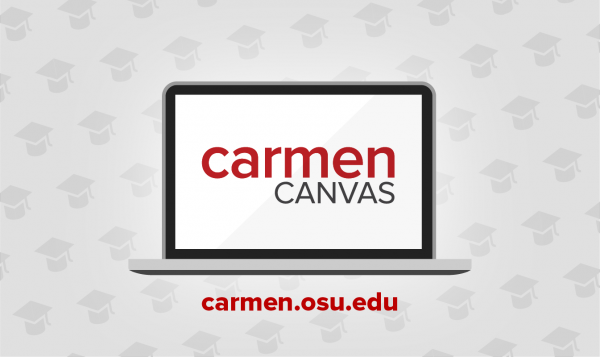New Rich Content Editor, Assignment Enhancements Coming to CarmenCanvas for Spring 2021

While you are preparing for the upcoming spring semester, you will notice a few feature enhancements and changes within the learning management system. The most prominent change will be the new Rich Content Editor (RCE), which has been available to test since February 2020. The new RCE will be the only RCE beginning mid-December, so you will see this updated text editor in all your Spring 2021 courses. Along with this change, we will be enabling enhancements for student assignments and there will be slight changes to the Gradebook and the Upload/Record Media button in the RCE.
Rich Content Editor
The Rich Content Editor (RCE) is a feature in CarmenCanvas available anywhere you create content. It’s the text box you’ve used to write instructions for your Assignments and it’s the editor you’ve used to create Pages that combine text, media and links to other places in your course.
If you haven’t tested it yet, the most significant change you’ll notice in the NEW RCE involves the tool bar items along the top and bottom of the editor. The accessibility checker has moved to the bottom near the word counter and the tools across the top have been grouped to simplify the look and feel. No tools have been removed—they are simply organized in a new way. The new RCE also expands to the full width of your browser, with the sidebar menu of options only appearing when needed.
If you have tested the new RCE, you may still notice a few differences in Spring 2021. Instructure has continued developing the tool as a result of feedback from instructors who have been using it, and now the new RCE will replace the old version for all Canvas users on December 17.
Upload/Record Media
After December 19, you will notice a slight change to how video files are stored when you use the Upload/Record Media button in the RCE in your course. Videos uploaded through this method will now appear in a folder called Uploaded Media within your user, course or group files. This change allows you to re-use uploaded media in other places in your course or group as well as download videos recorded using the media recorder in Canvas.
Remember, if students are uploading images or media to a discussion post, make it a graded discussion so it doesn’t count against the student’s individual file quotas. You can set the graded discussion to a low weight or change the settings so it doesn’t count towards the final grade if you don’t intend for your discussions to be graded.
Assignment Enhancements for Students
Based on feedback from users, Instructure has developed a new interface for students when they submit assignments. The primary enhancement coming to Assignments provides students with more clarity on submission workflows. When students submit Online and External Tool assignments, they will see a status bar across the top, showing them if the assignment is available, if they have submitted, which attempt they are working on, and when the assignment has been graded.
For these assignment types, students will be able to draft and save submissions from the assignment page without needing to submit immediately. The new view for students also makes it easier to see instructor feedback, review the rubric for the assignment, preview their submissions and submit comments or questions. As an instructor you will see these comments in SpeedGrader.
If you allow multiple attempts for an assignment, be sure to let students know that they must click the plus (+) sign in the new assignment timeline. This may not be intuitive for all students.
Please note, the enhancements for student assignments do not yet apply to Group assignments or Peer Review assignments.
“View Ungraded as 0” Option
You may notice a small change to the Gradebook View menu in your spring courses: an option to “View Ungraded as 0.” This setting allows you to view student grades as if all ungraded assignments were worth zero points. Enabling this setting only affects your view of the gradebook—students will not see anything different in their grade pages.
Office 365 Integration
Canvas includes an integration with Office 365 tools. You may want to start familiarizing yourself with this feature ahead of the retirement of BuckeyeBox.
The integration can be used to share files that are too large to store in Carmen. We recommend you try out this integration for any new files you would like to link in your course. This integration can also be used to collaborate on Word, PowerPoint and Excel files within CarmenCanvas, and students can utilize this integration to submit O365 files for assignments.
CarmenZoom Recording Retention
With the shift to online and hybrid learning, instructors are using CarmenZoom and recording their meetings to share with students or colleagues. Keep in mind that the Zoom cloud provides temporary storage for your recorded meetings. While you can use the Zoom cloud to share recorded lectures with students, you should have a permanent storage plan in place, such as Mediasite, for any recordings you intend to keep beyond one semester.
Keep Teaching Resources
Begin your spring semester preparation at the Keep Teaching site, featuring updated information about teaching modes and helpful strategies for each. This site also includes Student Success strategies and a list of available workshops to help you navigate a variety of teaching topics.
